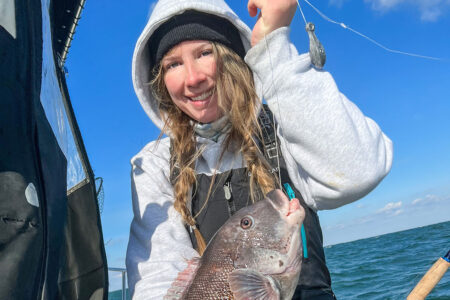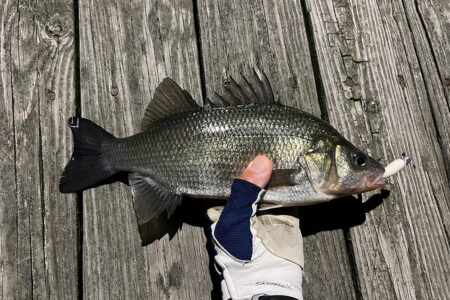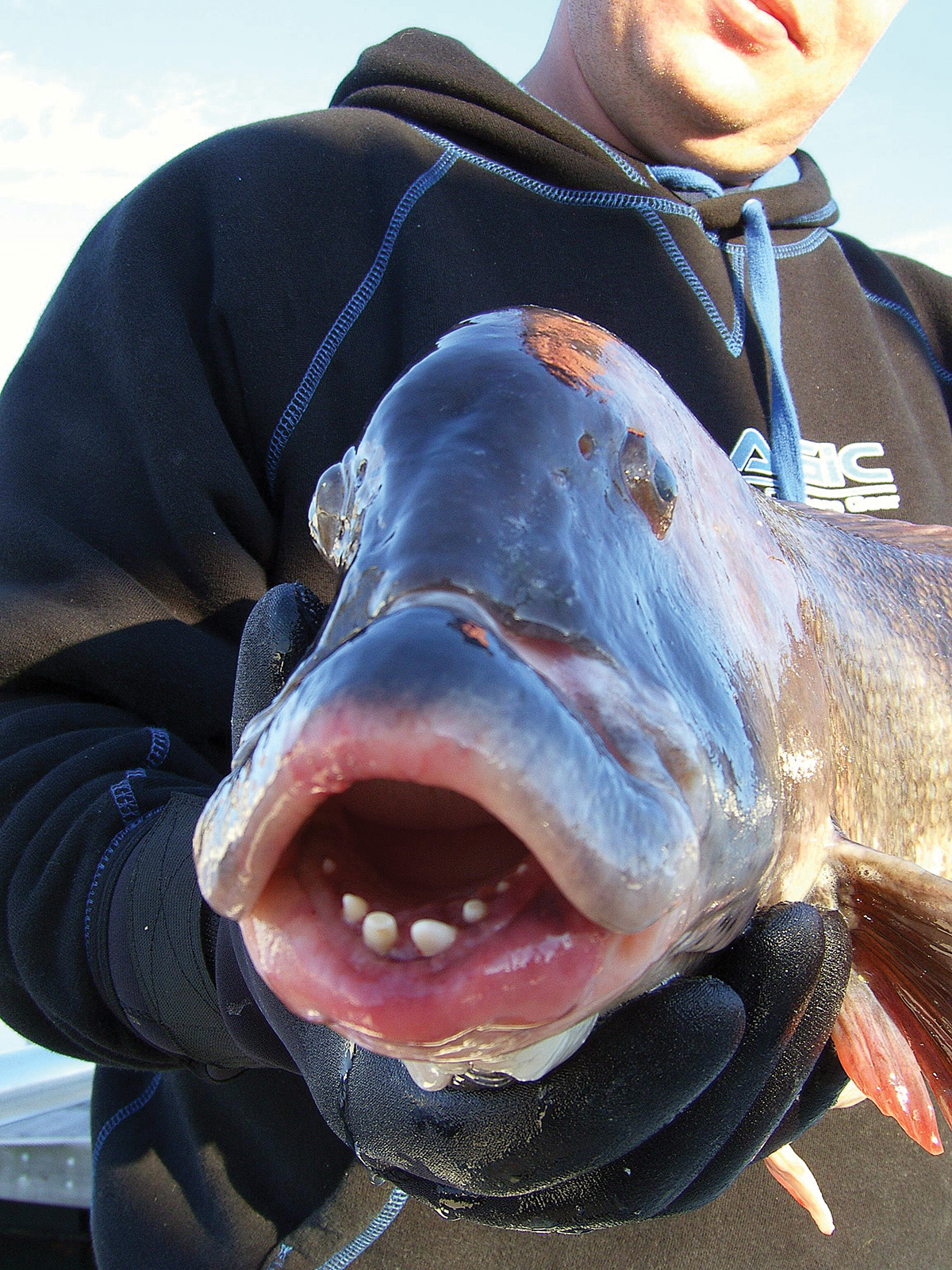
When braving the elements this month for blackfish, don’t go meek on your rigging.
Simply stated, most saltwater fish inhale a piece of food drifting along with the current as they search for a meal. As such, the most effective technique for catching them is to place an appropriate piece of bait like squid, clam or live killie on a hook and send it down to the bottom that’s a known haunt for your target, be it fluke, porgy, cod or sea bass.
While this approach is regularly used by anglers targeting blackfish – more appropriately known as tautog – it’s not really the most effective, as the food most blackfish are targeting is by no means as soft.
Indeed, the piece de resistance for hungry tautog is hard and crunchy, to put it mildly. These tasty bottom feeders concentrate much of their feeding effort on seeking out barnacles, snails, mussels, tiny lobsters and the myriad species of crabs that dominate the bottom.
Unlike most predatory fish, blackfish have jaw configurations ideally suited to inhaling baits, with several canine-like teeth at the front of their mouth and the remaining teeth along the side. They readily use their front teeth to rip barnacles from the rocks to which they adhere. They then inhale the crustacean, crushing it in their jaw, and then swallow the shell coated dinnertime treat. The same applies as they inhale a crab, snail or other crunchy food.
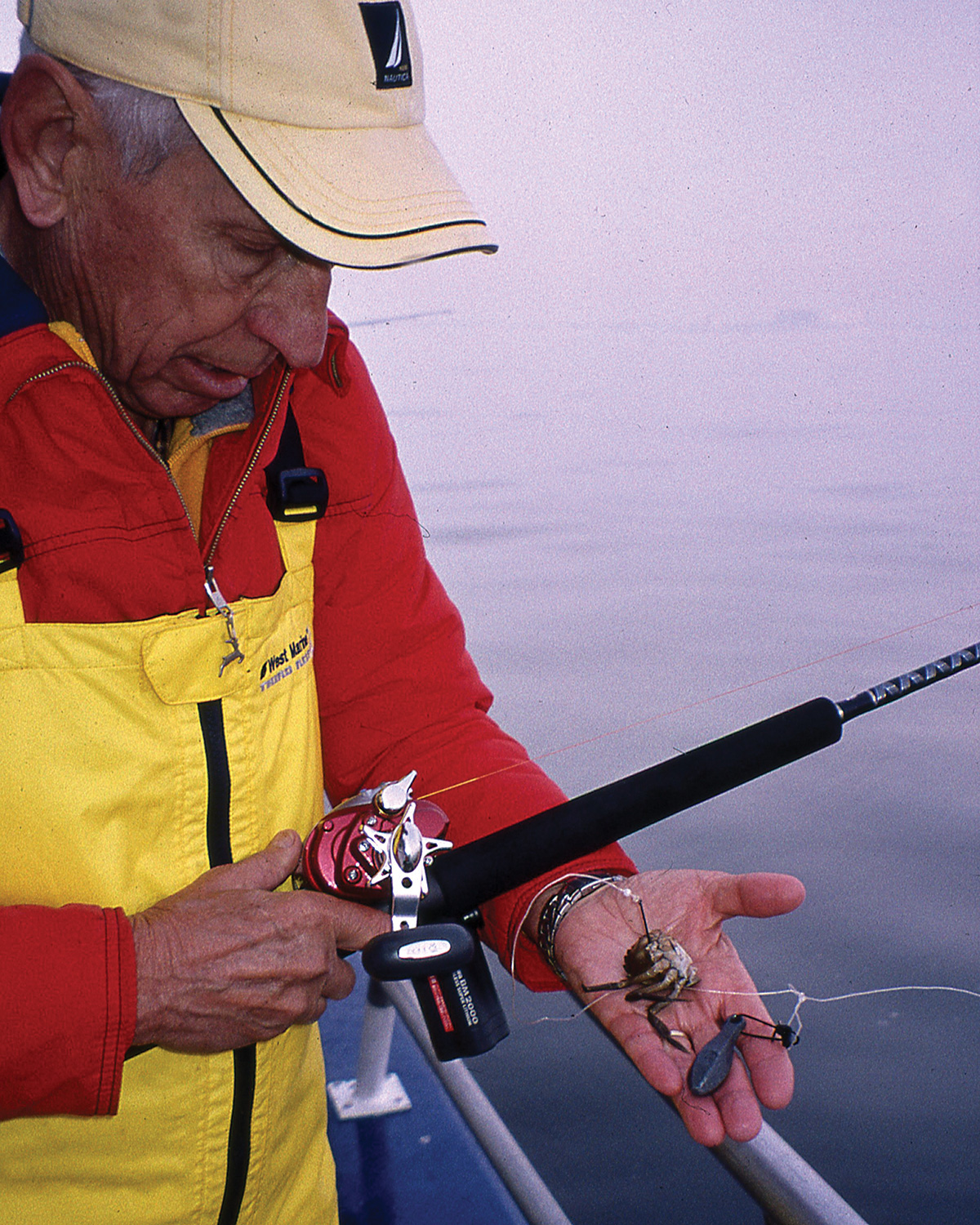
Whitechin Solution
The problem many anglers confront is that they’re accustomed to immediately striking a fish when they feel it taking the bait. Sometimes this approach works, especially if the bottom is strewn with softer baits that blackfish can inhale with ease. But these reef denizens are most accustomed to momentarily inhaling the bait, crushing its outer shell and then swallowing it.
Along the way, as you can appreciate, it’s very easy for a blackfish to mouth a small crab and crush it in its jaw before swallowing. In so doing it often buries the hook in the crab or snail’s shell and as you attempt to set the hook are unable to do so, as the hook isn’t in position to penetrate, as it would be if were a soft bait.
If you’re using a single hook in the hard shelled bait, it often gets pushed along the edge of the shell, and the point won’t be in position to penetrate as you lift back with your rod tip to set the hook. A good approach that hardcore tautog fishermen have found most effective is to place a pair of hooks into the bait, which reduces the odds of both hooks getting buried in the bait, and in all likelihood one of the hooks is in a position to penetrate both when the blackfish is crushing the bait and/or swallowing it.
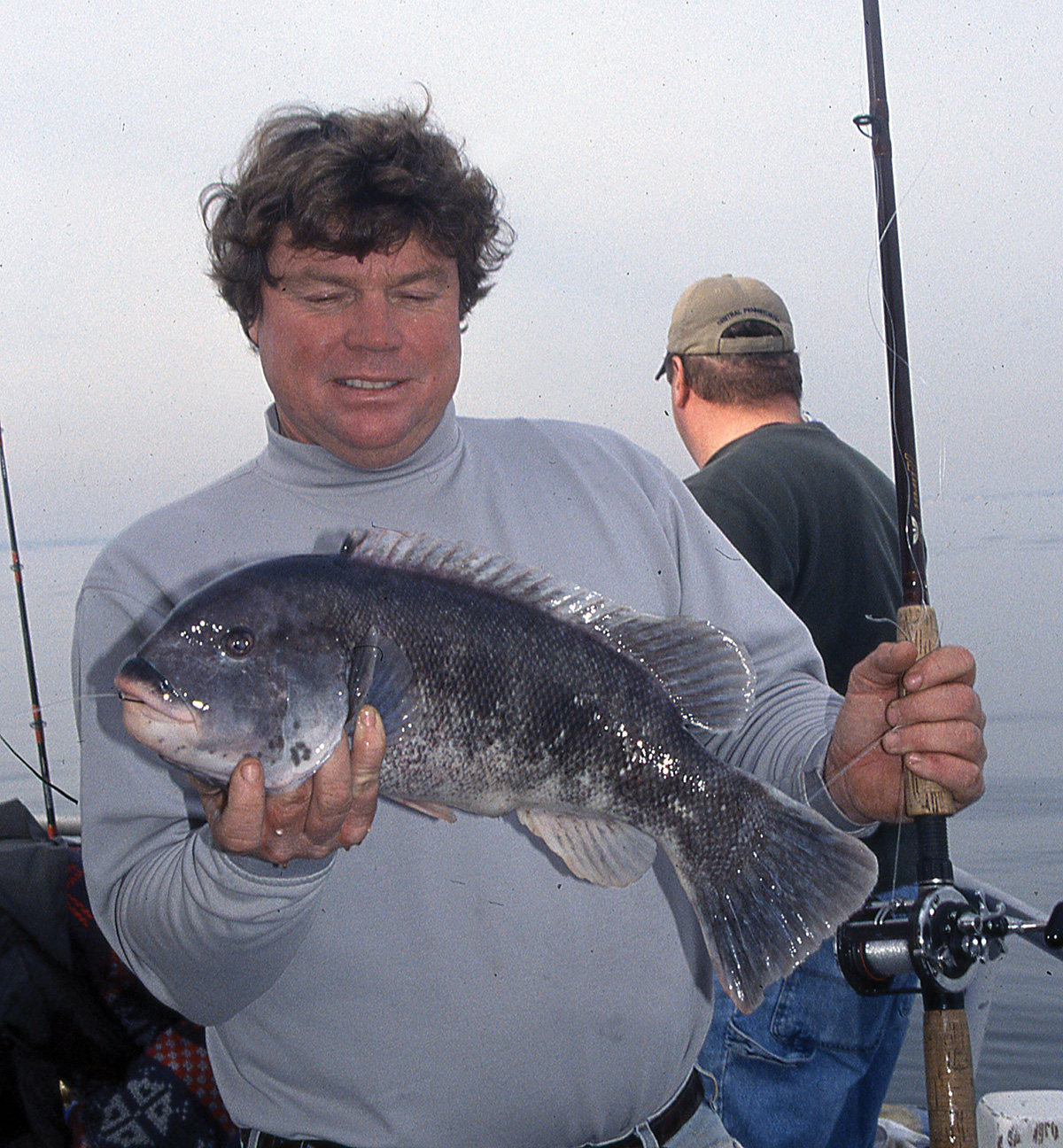
Simple Rigging
It’s relatively easy to snell a pair of hooks to either end of a piece of leader material, and I’ve observed there are some rigs available already tied in this fashion. If you prefer to tie your own, begin with an 18-inch long piece of 30-pound test leader material and snell a size No. 6 or 8 Virginia, Pacific or similar style hook to each end of the leader. Then tie a loop knot into the center of the leader between the hooks, with a three-way swivel within the eye of the loop. This enables you to attach a sinker snap onto one remaining eye of the swivel and your line to the last swivel eye.
The pair of hooks extending side by side from the three-way swivel enables you to easily place each within the bait you’re using, being either half a blue crab, white legger, smaller green crab or fiddler crab. Make certain the point and barb of the hook are exposed from the bait and not buried within; this way it’s more likely to quickly penetrate. The rig also works well with a mussel or barnacle bait, or even a long, narrow piece of clam, which is easier for a blackfish to inhale than a large chunk bait.
The key is placing one hook near the end of the bait, and the second hook at the other end, enabling the blackfish to inhale it into its mouth with ease, yet it’s unlikely that both would be crushed into the bait and not be in a position to penetrate after the blackfish’s jaw executes its crushing process.
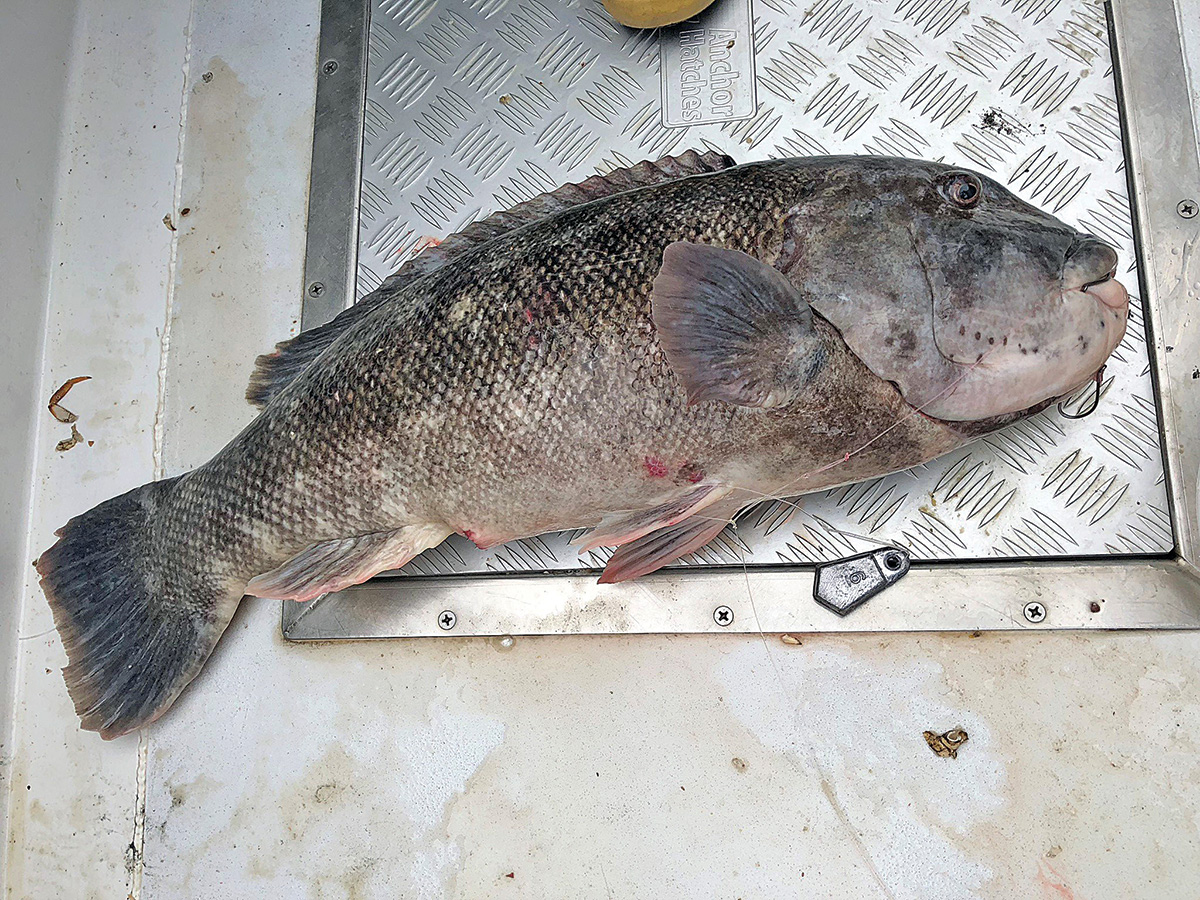
Tautog Touch
Once baited up, send the rig to the bottom with a sufficiently heavy bank style sinker so you can keep the line perpendicular to the bottom irrespective of wind or tidal flow. Sometimes 2 or 3 ounces works, but with a strong current you may suddenly need an 8-ouncer. You don’t want a loop in the line, just keep it taut so that you can feel even the slightest nibble of a bergall, which you’ll often find to be a nuisance on the blackfish grounds.
When you feel the immediate and noticeable strike from a blackfish, by all means hesitate for that moment or two that it takes for it to crush the shell of the bait and then inhale it. During this process one of the hooks will usually be in position to penetrate, and when you lift back smartly to set the hook you’ll be in business and the fun begins. Keep your rod tip up and with a reasonably firm drag begin promptly reeling, to avoid the blackfish getting hung up on bottom debris.
Even if your rig may be laid up for the 2018 winter, there are plenty of party and charter boats running wreck trips throughout the New Jersey and Delaware region this month (Delaware is 15 inches minimum size and five fish through March 31, while New Jersey is 15 inches and four fish through February 28).
| TOG TIPS: KEEP IT MOVING |
|---|
| Standing in one spot all day can spell your doom. Blackfish tend to cluster in areas where there’s ample food available. Your bait’s got to be within close range. I’ve developed a habit of moving to wherever I notice an empty spot along the rail. Oftentimes I also employ an underhand cast to pitch the baited rig away from the boat, hopefully into an area where the blackfish are congregating and feeding.
– Milt |

